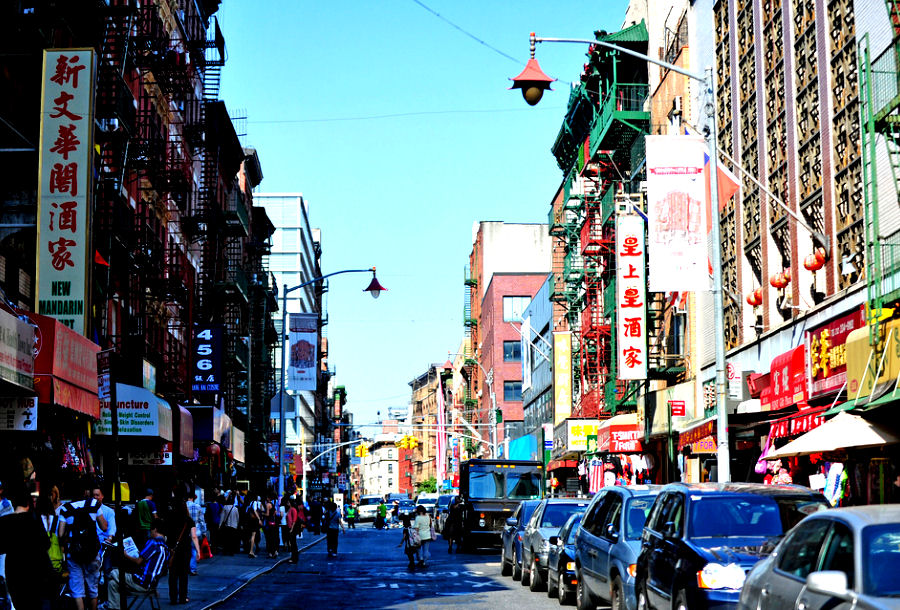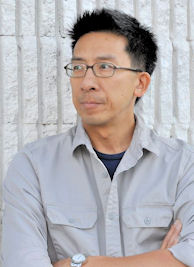
By Guest Contributor: Jan Lee
It was Valentine’s Day in New York City. While others were thinking about where to buy last minute chocolates and flowers, my thoughts were entirely elsewhere. I was reading restaurant reviews in the New York Times and found myself confronted with an article exploiting my community’s perceived exoticisms.
The review was from the New York Times (“Culinary Clashes End in Harmony at Chinese Tuxedo“), but I would have sworn I was reading a Chinatown caricature by Chuck Connors—the 19th century Rhode Islander who shamelessly profiteered by hawking exaggerated, cartoonish tales of exciting and foreign “ethnic” life in turn-of-the-century Chinatown to upper-class white tourists. National news correspondent Arthur Bonner described Connors as “a hanger-on in Doyers Street saloons who earned tips by showing thrill seekers tame wonders like the Joss House. For an added tip he would show them an opium den complete with a ‘fallen woman’.”
This treatment of Chinatown as a seedy den of foreign crime and taboo thrills to be packaged and sold as a form of ethnic tourism would be best left to the past. Yet, writers and editors seem perfectly willing to revive old stereotypes and evoke the worst of Chinatown’s history in a vain attempt to remain relevant, regardless of the consequences.
On February 14th, 2017, the New York Times showed Chinatown that it was comfortable with this in its review of the newly opened restaurant Chinese Tuxedo. Restaurant critic Pete Wells wrote:
The bend halfway down Doyers Street in Chinatown used to see more killings than any other stretch of road in the country. The Bloody Angle is safe now, but not quiet.
The gangs there have been replaced by packs of roaming young people who come for siu mai and har gow …
During the Tong Wars of the early 20th century, the theater was neutral territory, where Hip Sing and On Leong sat separately but peaceably, until the day in 1905 when Hip Sing gunmen set off firecrackers during a performance and then opened fire on their rivals.
The Chinese Theater Massacre isn’t necessarily the piece of local history that the Chinese Tuxedo wants to invoke.
Gangs, killings, Bloody Angle, Tong Wars, gunmen opening fire—the visual imagery Wells first and repeatedly conjures up is hardly a montage of food or dining. It’s a clichéd stereotype about Chinatown invoked to capture the reader’s attention because the food, the restaurant, and the review are all apparently too boring to stand on their own. I know I should expect more than Connors-grade exploitation from the New York Times, but sadly, I can’t. Not anymore.
There is an adage in journalism: “if it bleeds, it reads.” Pete Wells took this beyond the extreme when he started off his article about food by invoking killings, gangs, and bloodshed. More than that, he was being lazy. There, I said it. When journalists can’t or won’t write an article in 2017 about squab and eggplant without connecting that innocent dish to decades–old gang violence in Chinatown, their laziness becomes indistinguishable from racism.
This condescension has been committed by more than a single journalist. There is a pattern at the New York Times. In her April 2011 article on Nom Wah Tea Parlor, columnist Ligaya Mishan wrote:
Back in the day when Chinatown was just three mean streets, Doyers was the kink in it, a dogleg alley barely 200 yards long, its tenements riddled with fan-tan houses and opium dens, its cobbles sweating whiskey and camphor. The tongs went at it down there with hatchets and snickersnees, rival gangs of fallen men with names like Mock Duck and Girl Face.
The sharp, ambush-prone bend had a name, too: Bloody Angle. Herbert Asbury made it forever noir in “The Gangs of New York”: “The police believe, and can prove it so far as such proof is possible, that more men have been murdered at the Bloody Angle than at any other place of like area in the world.”
It still feels eerie, even on a Sunday at noon. The rest of Chinatown heaves, but on Doyers Street it’s hushed, the way the city is never hushed.
Like Wells, Mishan reached for the sleaziest, most horrifying imagery out of Chinatown’s past to captivate the reader. Again, this was imagery that couldn’t have had less to do with the subject at hand.
The cheap tactic of using recycled Orientalism to attract readers has had its time. Yes, Doyers Street is significant, and to deny that would be to deny the history of Chinatown itself. My family, having lived on Chinatown’s Mott Street for three generations, understands that history—whether good or bad—cannot and should not be hidden.
And yet, the New York Times feels it necessary to — over and over again — remind its readers of archaic stereotypes they might have otherwise long since forgotten. Racist, essentialist images are thrown front and center, the blood splattered again to paint the scenes all over.
It appears that one of the most estimable news publications in the country (and possibly the Western world) is at best archaic and obsolete in its treatment of New York City’s Chinatown; at worst, it is subtly promulgating the very kind of insidious, small-minded, and racist messages that it purports to combat.
The reach and influence of the paper is unquestionable, and yet this subtle racism flying under the cover of edgy journalistic conventions is just as exploitative as Chuck Connors’ turn-of-the-century slum tours. Literary Orientalism, which depicts all Chinese people as outrageous and exotic objects to be gawked at instead of understood, has long been rejected by Western scholars (and was always rejected by Eastern scholars) as a damning reflection of bigotry.
It’s time that the New York Times caught up.

Jan Lee is s a life-long resident of Chinatown. His family has its roots on Mott st. that stretch back four generations. In 1992 he founded Sinotique, an antiques, home furnishing and custom design business at 19 Mott St. In addition to being a local business owner Jan also manages his family’s real estate company which comprises of 19 and 21 Mott st. purchased by his grandfather in 1924. As a resident and a 2nd generation executive member of the Board of Directors at Hamilton Madison House, he continues to volunteer his time and expertise on matters pertaining to Chinatown streets, transportation, property ownership and issues facing residents.
Learn more about Reappropriate’s guest contributor program and submit your own writing here.

